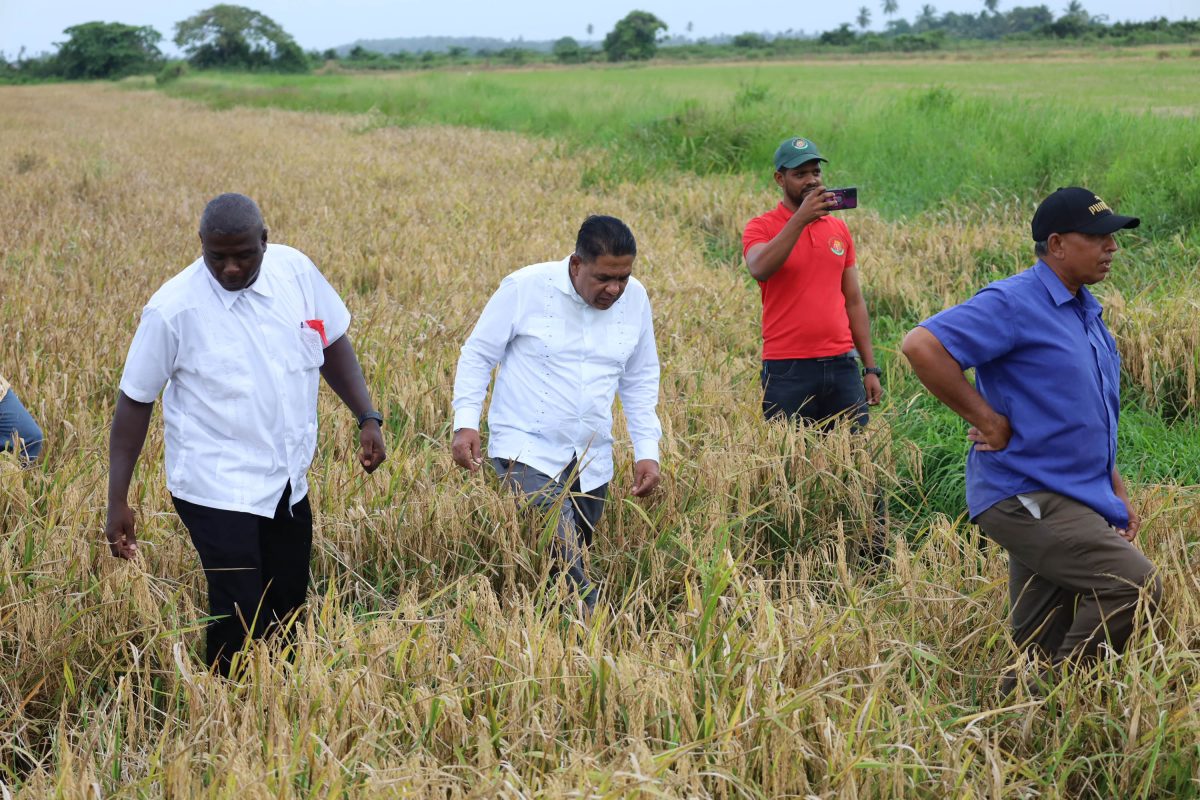Collaborative efforts between farmers and the government saw the national yield for the second crop of 2022 averaging over six tonnes per hectare.
Agriculture Minister, Zulfikar Mustapha, during his weekly sector update programme, revealed that the improvements were a result of farmers applying the correct agronomic practices as well as government’s intervention to ensure farmers had the necessary support throughout the production cycle.
“Over the last two years, the weather conditions were very unfavourable. Although we’ve experienced this and what the pandemic has done with other input costs associated with rice production, we persevered, achieving higher production figures and yields than we did last year. When you compare 2021 production figures to that of 2022, because we are indeed harvesting the last crop of 2022, we’ve surpassed those levels. If we didn’t have the issues we had, we would’ve had a bumper crop”, Mustapha said.
“With the crop that we are currently reaping, we’ve seen that yields have increased tremendously, to over six tonnes per hectare. That shows a marked improvement where the weather condition is concerned. So far, we’ve had favourable weather conditions for reaping and generally for the entire crop. I am hoping that for the second crop of 2023, we’ll have a bumper crop; a record-breaking production,” he noted.
Mustapha acknowledged that input costs continue to pose challenges to farmers, but reminded that government has been working to lower the cost of production, improve yields, and offer support to farmers across the country. “… As you know, we assisted farmers with fertilizer subsidies for the last crop in 2022. We’ve been giving seed paddy to farmers. We’ve expended hundreds of millions of dollars to rehabilitate dams as well as drainage and irrigation structures. Immediately when we returned to office, land rental and D&I charges were reduced to bring down the cost. We’ve implemented measures to make other input costs more affordable and we’ve been working with the farmers to improve yields.”
GRDB’s Deputy General Manager, Kuldip Ragnauth, while noting that to date harvesting is just about 56% complete, said lower-yielding farmers have seen increases in their yields through the support of the Board and its training sessions on better agronomic practices. “… We also worked with the lower-yielding farmers; those farmers who were achieving 25 bags per acre or less; they were targeted and given special attention, assistance, and support from the Board in order for them to increase their level of performance and ultimately their yields,” he explained.
Meanwhile, a joint team consisting of scientists from the GRDB and GRMEA (Guyana Rice Millers and Exporters Association) travelled to Brazil to gain technical knowledge on how Guyana’s seed-producing facility and production can be enhanced in order to have higher-yielding seeds.
The release said that in Region Four, some 85% of the acreage sown has been harvested, followed by Region Six with 61%, Region Five with 58%, Region Three with 45%; and Region Two with 39%.






